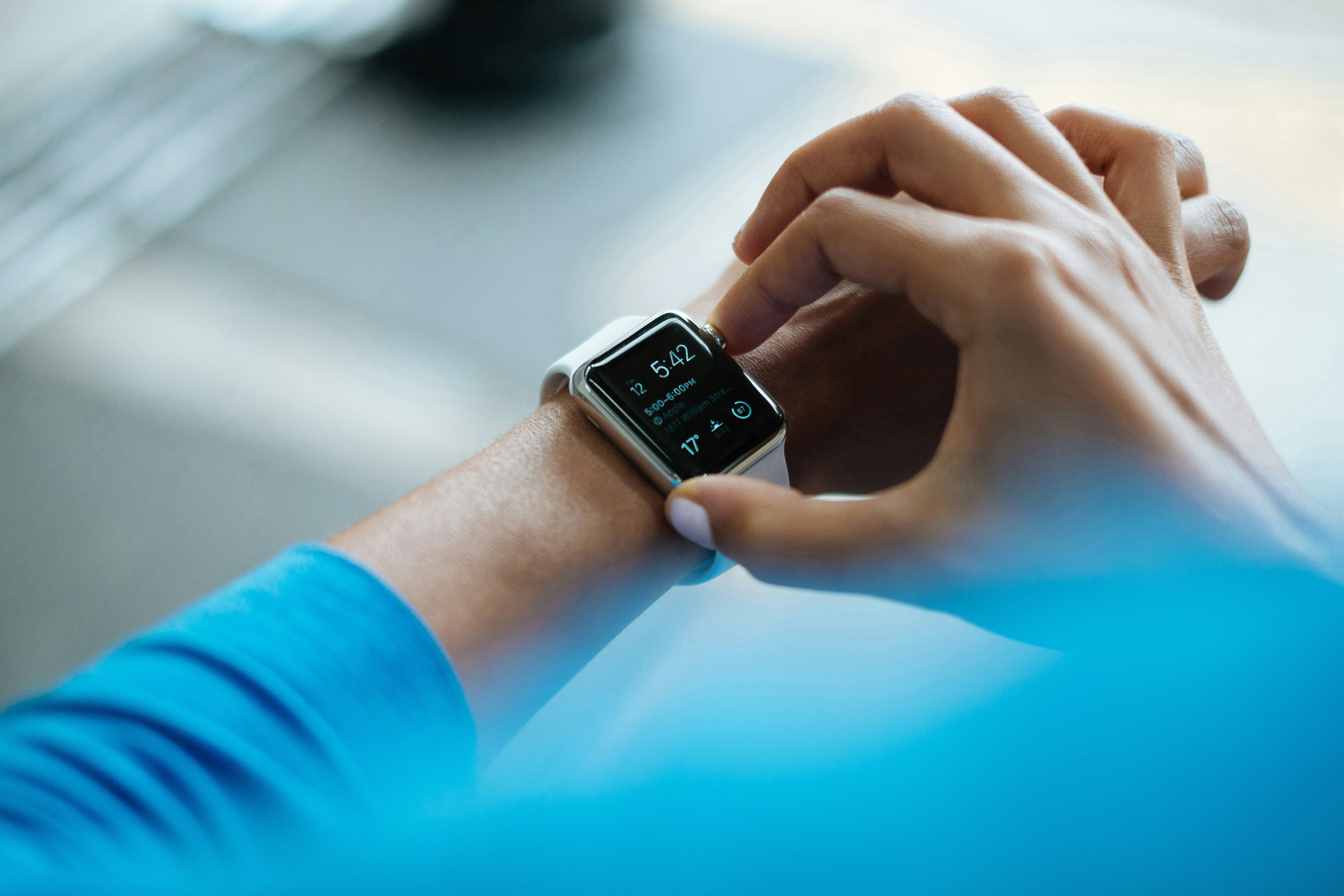Have you ever picked up your phone with the intention of checking one notification and found yourself, an hour later, still scrolling through social media feeds? Screen time can be a tricky beast, quietly chewing away at our days while pretending to be a helpful companion. It’s like you’re trying to have a conversation with a friend at a crowded party, only to be constantly interrupted by other people asking you where the nearest bathroom is. There’s no way to balance that social tightrope without feeling one part juggler, one part escapist. But what happens when it’s the screen drawing you away, not the people around you?
This image is property of images.unsplash.com.
Understanding Screen Time
Before diving into solutions, let’s take a moment to understand what screen time is and why it matters. Screen time refers to any time spent in front of a display, whether that’s a smartphone, tablet, computer, or television. It’s not inherently bad—as many events in life, it’s about moderation. However, when screen time begins to interfere with our well-being and productivity, a recalibration is in order.
Modern devices, like the iPhone or iPad, come with built-in tools to track and manage screen usage. Apple aptly named theirs “Screen Time,” and it’s a feature both illuminating and terrifying. Upon checking my own statistics, I realized I could have read “War and Peace” instead of checking Twitter for the umpteenth time.
Recognizing the Effects of Excessive Screen Time
Physical Health
Excessive screen time can lead to a variety of physical health issues. Eye strain is one of the most common problems, leaving our vision blurry after a long day. Taking breaks is as important as remembering to blink because—surprise—screens make us neglect that. Furthermore, poor posture from hunching over devices can lead to neck and back pain.
Mental and Emotional Health
Beyond the physical, screen time affects our mental and emotional health. An overwhelming sense of anxiety or dissatisfaction can surface, particularly with social media’s persistent whisper urging us to compare ourselves to curated images and experiences. It’s like being stuck at a high school reunion where everyone seems to have marinated in the fountain of eternal youth and success, while you quietly munch on baby carrots.
Productivity
Then there’s productivity—or the lack thereof. Screens are masterminds at drawing attention away from essential tasks. Have you ever sat down to work and decided just to check your messages, only to realize two hours have gone by? The challenge lies not in using screens but in using them wisely.
This image is property of images.unsplash.com.
Setting Goals for Screen Usage
It’s crucial to outline what we want from our screen time and to establish realistic, attainable goals. Here’s a conversation starter: What do I want more of in my life that screens might be taking away from?
Creating a Screen Time Strategy
The first step to reclaim control is assessing your current usage patterns. Take advantage of features on your devices to monitor how much time you’re spending on each app. Is Instagram monopolizing your Sundays? Does the latest video game gobble up your evenings? Knowing where time goes is the first step to directing it where you want.
Prioritizing Activities
List the activities you wish to include more of in your daily life. Maybe it’s reading books, exercising, or spending more genuine time connecting with family. I can vouch for the satisfaction of reading mangling Guatemalan poetry out loud to oneself, sitting upside down in an armchair. Whatever your list looks like, remember that each activity is another chance to balance your relationship with tech.
Implementing Screen Time and App Limits
Once you’ve mapped out a strategy, it’s time to set boundaries using the Screen Time features on your Apple devices.
Setting Limits
Successfully using screen time begins with setting limits. The Screen Time settings allow you to establish app limits for categories like social media, games, or productivity apps. You can also set limits for individual apps if you know a particular one is your Achilles’ heel. This is your cue to become your strict but loving parent, saying no more than yes for long-term benefits.
Downtime and Always Allow
Screen Time offers the Downtime feature, which blocks all but essential functions during specified hours. While this sounds a bit like a curfew, it’s actually a blessing disguised as restriction. You’ll have the mental space to unwind and enjoy other haven-like activities, like staring out the window as the sunset stretches lazily across the sky.
There’s also the Always Allow setting, which lets you choose specific apps or contacts that remain accessible during Downtime. This is where you maintain sanity by allowing essential calls or the meditation app that gently lulls you into a restful sleep.
This image is property of images.unsplash.com.
Encouraging Screen-Free Activities
Part of regaining control over screen time lies in replacing it with other fulfilling activities. Remember those things you longed for more of in life? Now’s the time to let them shine.
Unplugged Hobbies
Consider hobbies that don’t require technology, such as painting, gardening, or cooking. I tried knitting once, but my scarf looked oddly reminiscent of a lopsided giraffe. Still, the myriad of bumps and loops was satisfying to craft.
Outdoor Adventures
Another excellent alternative is venturing outdoors. Walks in the park, cycling, or practicing yoga on a sun-dappled lawn can fill your screen-tethered soul with much-needed fresh air and a boost of Vitamin D—a friendly reminder that nature’s filters far outdo any Instagram preset.
Family and Friends Time
Remember the people whose faces you occasionally see between swipes and scrolls? Building genuine connections with family and friends requires investing time in conversations, shared meals, or game nights. You might even uncover hidden talents among your circle: a strategic genius at Monopoly or someone with the enviable skill of recreating every meme using only facial expressions.
Teaching Kids and Teens about Screen Time
As much as we need to manage our screen time, it’s essential to guide children and teenagers in building a healthy relationship with technology.
Setting Examples
Children often mimic adult behavior, and it’s crucial to model a balanced approach to screen time. I’ve found that when I put my phone down and take off my glasses exaggeratedly, my niece will sometimes respond by building a castle with her toy blocks instead of begging for the tablet. The small victories do count.
Using Parental Controls
Apple devices offer parental controls under the Screen Time settings. These allow you to limit content, set time restrictions, and track usage without infringing on privacy. Establishing open communication around these controls helps ensure understanding and cooperation.
Encouraging Other Interests
As with adult screen time balance, encouraging children to explore other interests is vital. Sports, arts and crafts, or reading can be excellent alternatives to screen time. Sometimes, it’s about finding that one hobby that makes their eyes light up—the way mine do at the sight of a perfectly baked bread roll.
Navigating Challenges and Sticking to Goals
Starting on this path isn’t a sprint but a marathon, full of the occasional side stitch and temptation. Recognize that relapses into old habits are common, just as is the ability to start afresh.
Tackling Disruptions to Routine
Life often throws curveballs—work emergencies, family obligations, or tantalizing Netflix premieres. Understand that occasional deviations from your screen time goals are okay, as long as you keep your overall intentions in sight. Remember, it’s the continuous effort towards balance that counts.
Celebrating Milestones
Celebrate achievements, both big and small. Whether it’s successfully reading a book cover to cover or reducing social media time by 30%, acknowledging progress maintains motivation. Personally, I treat myself to a piece of dark chocolate, just enough to spur more steps forward but not enough to necessitate an emergency call to the dentist.
Conclusion
In this digital age, regaining control over screen time means recognizing its place in your life while ensuring it doesn’t overshadow other valuable experiences. By setting goals, implementing device features, and embracing screen-free activities, you can strike a balanced relationship with technology and reclaim those precious hours of your day. And perhaps next time you feel the urge to pick up your phone, you’ll instead glance out a window or engage in a conversation—simple acts that no notification can replicate.



